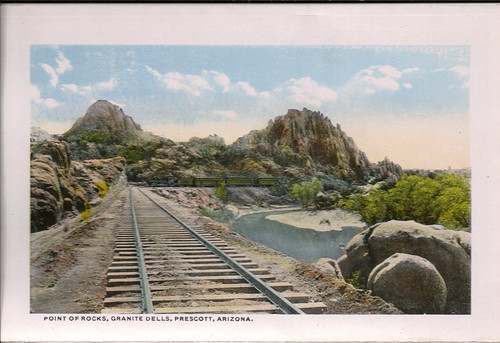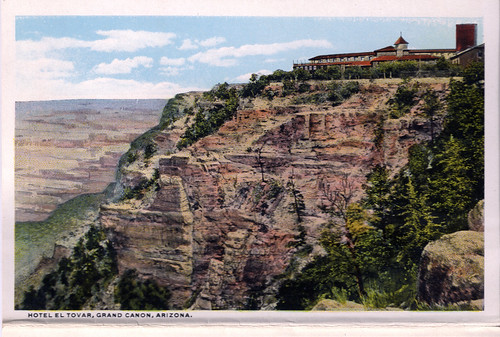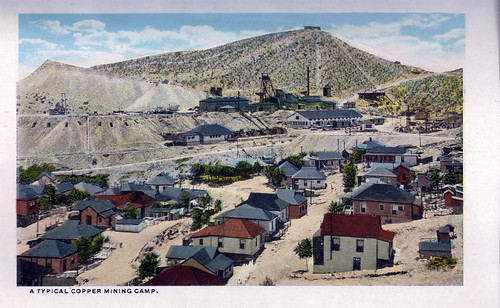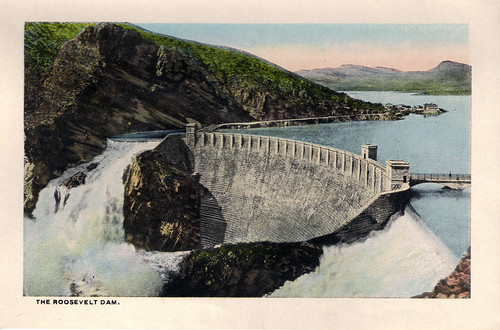
From the 19th to the early 20th century, train travel moved tourists from the East out West. Railroad companies were instrumental in promoting the natural marvels of the West and the creation of the National Parks system. Including the train in this postcard of Point of Rocks in Prescott is a tacit reminder of how to visit and how tourism was situated in the development of the character of the Southwest.

The El Tovar hotel, finished in 1905, is yet another reminder of the role of tourism in the development of the West. While one of the postcards depicting the Grand Canyon without a human presence, the second depiction of the canyon highlights El Tovar. The hotel is a magnificent example what is colloquially referred to as "Parkitecture."

The Roosevelt Dam, the lake, the railroad, all reveal human influence on the Arizonan environment. The postcard of the mining camp reminds us the exploitation of the land. Mining is a huge industry in Arizona. Towns such as Bisbee and Jerome began as mining towns. Unfortunately, much of the mining is open pit mining, which is incredibly destructive and produces huge amounts of waste. It's a classic battle of what we need vs how we're willing to sacrifice our environment. One example of the debate that is currently going on revolves around the continued threat of an open pit copper mine on or near the Santa Rita Mountains. The Santa Ritas are part of Coronado National Forest and a popular hiking/camping destination. Learn more here at Save the Scenic Santa Ritas.
The presence of people throughout the postcard set reveals the value of using the land. What's displayed is that the land is an object and a space that is meant to be used by people and that it draws its value not from natural beauty or inherent grandeur, but rather from our interaction with it. As you can probably assume from yesterdays post, when I say "our" in relation to the postcard book and its historical moment, I'm referring to white Americans. There is, of course, a political element to everything, even old postcard books.


No comments:
Post a Comment